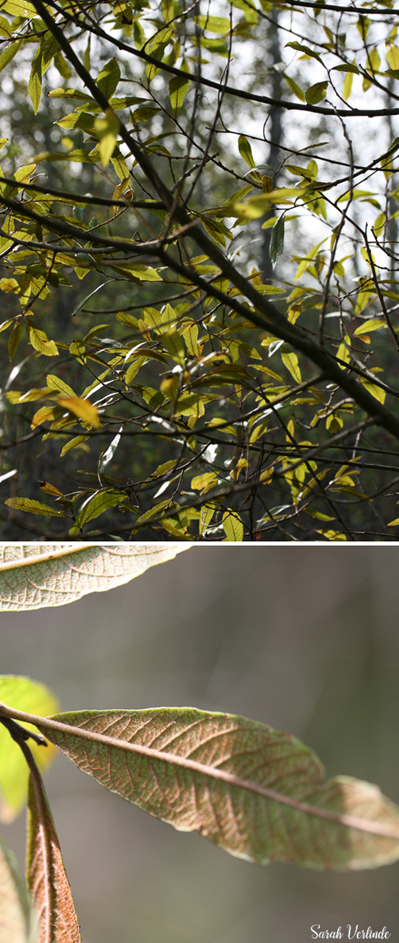Scouler’s willow
Salix scouleriana – Scouler’s willow

At a Glance:
- Family: Salicaceae
- Plant Type: large spreading multi-stemmed shrub or single trunk tree
- Distribution: Western North America, Alaska to California, as far east as South Dakota
- Habitat: woods and open areas, along rivers and streams, and wetland edges
- Height: 6-35 feet tall, up to 65 feet
- Flowers/Fruits: drooping catkins. Males catkins are green and yellow, females are green. Once fruits develop, seeds are dispersed in the wind with fine, silky hairs (like cottonwood).
- Flowering Season: March- June
- Leaves: leathery/waxy dark green upper surface, with a lighter green/white, fuzzy underside with rust coloring. Leaf shapes are spatulate with a rounded tip and sometimes have a serrated margin.
- Generation: Perennial
- Bark: smooth to flaky bark, new growth stems have hairs on them, while mature stems are smooth
- Notable feature: Mature leaves have small hairs on the underside that are a red-brown rust color. No other willow in the area has this feature. You may need to hold it up to the light or use a magnifying glass to see it.
Restoration and Conservation
Scouler’s willow leaves are highly desired as browse by deer, American beavers, elk, moose, bears and small mammals. It provides habitat (either as a dense shrub or trees) for birds and small mammals. Beavers build dens and dams from the branches. The pollen and nectar are collected by bees and used for a food source for other pollinators. Birds eat the willow buds, leaves, twigs and seeds. Scouler’s willow grows well along streambanks, helping with soil stabilization, providing shade to cool water temperatures, and providing woody debris into the water creating ideal fish and salmon habitats.
The bark and roots of our three campus willows assist other plants in establishing by acting as a rooting hormone.
Ethnobotany
Northwest native tribes used the branches and twigs to make a variety of household items like snares, baskets, toys, and musical instruments. Different parts of the plant were used as medicine for stomach issues and pain relief. Willow bark is high in salicylic acid, the active ingredient in aspirin. Before aspirin was commercially made in a lab, willow bark was the main source for pain relief.
References and Resources
- Backyard Habits: https://backyardhabitats.org/wp-content/uploads/2018/10/Hardwood-Propagation-From-Cuttings.pdf
- FEIS/USDA: https://www.fs.fed.us/database/feis/plants/tree/salsco/all.html
- WTU Image Herbarium: http://biology.burke.washington.edu/herbarium/imagecollection/taxon.php?Taxon=Salix%20scouleriana
This article was written by Sarah Verlinde. For questions regarding the UWB/CC Plant Tour, contact Sarah at severlin@uw.edu.
